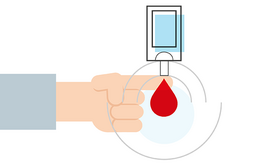Stay Ahead. Smart Risk Management
Collaboration is crucial for supply continuity and control.
There is tremendous growth within the biopharmaceutical industry. Patient demand for life-saving and life-enhancing medicines is increasing; driving scientific and technological advances in drug discovery, development and manufacturing. As a result, biopharmaceutical manufacturers are intensifying their speed to market, increasing their capacity and optimizing their productivity. With rapid growth and geographic expansion comes an extended supply chain with more complexity and vulnerability to supply chain disruptions, such as natural disasters. At the same time, there is strengthened regulatory oversight of supply chains to assure patient access to quality drug products. To stay ahead, manufacturers and suppliers must collaborate to ensure continuity of supply.
Together, we must make “risk-smart” decisions to strategically balance the need to invest in capacity expansions and supply chain innovations to continuously supply customers with the right, high quality products in the right place at the right time with the need to continually mitigate risks and minimize supply disruptions. The routine, reliable supply of products depends upon a disciplined approach to supply chain management, from demand planning, materials/supplier management, production planning, and manufacturing to inventory management, warehousing, distribution and logistics.


Meet the Expert: Aida Tsouroukdissian
I am Head of Demand Planning, Integrated Supply Chain Operations, at MilliporeSigma. My team focuses on attaining an accurate demand and forecast to drive the right supply chain activities at the right times to meet customer requirements. We are responsible for securing and managing the global demand of our Process Solutions portfolio through a collaborative effort with our commercial, marketing and operations teams. The portfolio includes single-use systems, assemblies and components, aseptic, virus and TFF filters, chromatography, cell culture media, chemicals and more.
We use a Sales and Operations Planning (S&OP) decision making process to understand the market dynamics, drive production planning requirements, reconcile our demand-supply gaps, and inform our capacity plans and capital investments. The S&OP process is the basis of our monthly “consensus” demand plan for the next 18-24 months. On a quarterly and bi-annual basis, we review our portfolios with marketing to define a 5-year long range plan and a 10-year strategic plan, respectively.
This S&OP process has also been extended to some of our customers and critical suppliers directly, with whom we have partnered to increase transparency and reduce the risk of a supply disruption. These supplier-partner relationships are becoming more important to maintain service levels that keep pace with the anticipated ramp-up in the industry.
I find it very interesting and rewarding to collaborate with customers, suppliers and colleagues in this way. It’s all about preparing for the future and mitigating risks!
To maximize resiliency, we execute a multi-faceted, “risk-smart” approach to supply chain risk mitigation. Leveraging years of experience, market intelligence, product and process knowledge, we proactively identify and prevent potential risks through effective capacity planning, business continuity planning, supplier quality management, change control management, disaster recovery planning, supply chain mapping and continuous improvement.
Data transparency and real-time, shared information between biopharmaceutical manufacturers and their suppliers is critical to effective capacity planning. An extremely crucial element of “risk-smart” mitigation is the provision of up-to-date, accurate customer forecasts. Ideally, forecasts will evolve from those currently based on single raw materials to the sharing of molecule BOMs (bills-of-materials) and critical products.
Another important element of “risk-smart” mitigation is business continuity planning (BCP). BCP is the process for identifying, preventing, mitigating and responding to supply risks for specific products. Prioritization of BCP’s is based on a business impact analysis. During the BCP process, a risk priority number (RPN) is assigned to a product or a process that quantifies the likelihood of occurrence, likelihood of detection, and severity of impact. Risks above a certain RPN must be mitigated. Business continuity many include Disaster Recovery Planning for the site in which the product is manufactured.

Meet the Expert: Michael Donahue
I am Head of Production Planning, Integrated Supply Chain Operations, at MilliporeSigma. My team focuses on our upstream supply chain from materials management to finished goods manufacturing. We’re responsible for buying raw materials, managing inbound material flow, warehousing raw materials, scheduling manufacturing on the production floor and subsequently managing outbound material flow. As a result, my team is responsible for developing and executing the materials management program at several of the manufacturing sites. Essentially, the program is about evaluating and mitigating risks related to raw materials, and therefore, our suppliers.
In production planning and materials/supplier management, predictability is very important. When we commit to having finished goods available on a certain date, we want to be reliable in meeting that commitment. We work closely with our suppliers to ensure we have robust supplier quality agreements in place that include quality controls. For our critical suppliers, we use specialized tools to perform risk assessments and more importantly, collaborate with them to develop risk mitigation plans – reducing risk upstream greatly improves the predictability of our finished goods output downstream!
To mitigate supply disruptions, supply chain mapping is essential. We use an effective tool from a leading supply chain mapping/resiliency company. Some customers and several suppliers use the same tool, which provides alerts on relevant world events. For example, if a man-made or a natural disaster strikes a manufacturing site location of a supplier, we will receive an early warning event alert that enables us to act, such as decide to re-route materials from a different warehouse.
Of course, we have several other risk mitigations in place. We may have dual sources and/or dual suppliers. However, this isn’t practical for many single-sourced raw materials. We would hold safety stocks – often at separate locations in case of a disaster.
I am very passionate about our upstream supply chain and making sure that we have suppliers who understand our customers’ requirements. I think of raw materials as an enabler (or disabler). If you do an excellent job, nobody notices. But, if you are not doing a decent job, then everybody notices!
Yet another important element to “risk-smart” mitigation is supplier quality management, which is designed to manage the quality of all procured products and services that directly and indirectly support manufacturing of finished goods. We categorize suppliers as critical, essential and non-critical. Although every procured product and supplier could be categorized as critical (after all, we cannot make the finished good without all the required raw materials), our categorization process considers the complexity of technology, sites impacted, country of origin, compliance and corporate social responsibility (i.e., REACH, conflict minerals and animal welfare), sales and more. The categorization determines the assessment frequency and method, such as audits.
Agreements, in which we are given visibility into customers’ biologics pipelines and critical product needs, enable us to prepare for capital investments, reduce concerns over capacity constraints, enhance relationships with our respective suppliers, improve inventory replenishment, prioritize business continuity and change control decisions, and more.
Ultimately, collaboration is key to being more predictable and reliable with improved delivery metrics. In turn, biopharmaceutical customers can better meet the demands of their growing patient populations and comply with regulations, such as FDASIA.
Dawn MacNeill is Marketing Operations Manager at MilliporeSigma.
MilliporeSigma is a trademark of Merck KGaA, Darmstadt, Germany or its affiliates. All other trademarks are the property of their respective owners. Detailed information on trademarks is available via publicly accessible resources.
The life science business of Merck KGaA, Darmstadt, Germany, operates as MilliporeSigma in the U.S. and Canada.


















